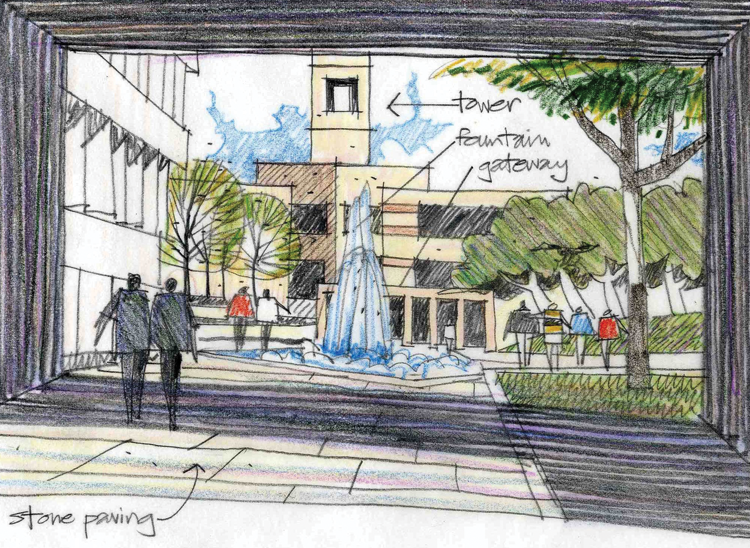Chapter Two
Nine Keys to Exploratory Drawing
Figure 2.1: This quick sketch is one in a series of “serial vision” sketches by the author for MESA Design Group, visualizing unfolding views for a campus open space sequence.

Some time well into my undergraduate studies, I noticed that one of my classmates, a seriously talented chap named Jimmy Santiago, had achieved a quantum leap in his drawing ability in an unnaturally short period of time. Suspecting that Jimmy had stumbled onto some dark, mystical secret or had possibly sold his soul, I confronted him. “Neither!” he chirped happily. “My drawing skills went through the roof when I stopped trying to ‘construct a drawing,’ and just drew—like when I was a kid.” Jimmy’s more rapid, expressive style had a look of spontaneity and freshness. The added quickness resulting from his more playful attitude allowed him to generate a much greater volume of sketches. And when exploring and communicating ideas with sketches, we quickly learned, volume is a virtue.
The development of quick, expressive sketching skills is the key to using drawing to capture fleeting impressions on location and as an exploratory tool, generating and depicting ideas in an exciting process of discovery. At best, concept sketching should be approached as play, a game of exploration with no judgment of the results.
Unfortunately, hand drawing for designers is still ...
Get Freehand Drawing and Discovery: Urban Sketching and Concept Drawing for Designers now with the O’Reilly learning platform.
O’Reilly members experience books, live events, courses curated by job role, and more from O’Reilly and nearly 200 top publishers.

